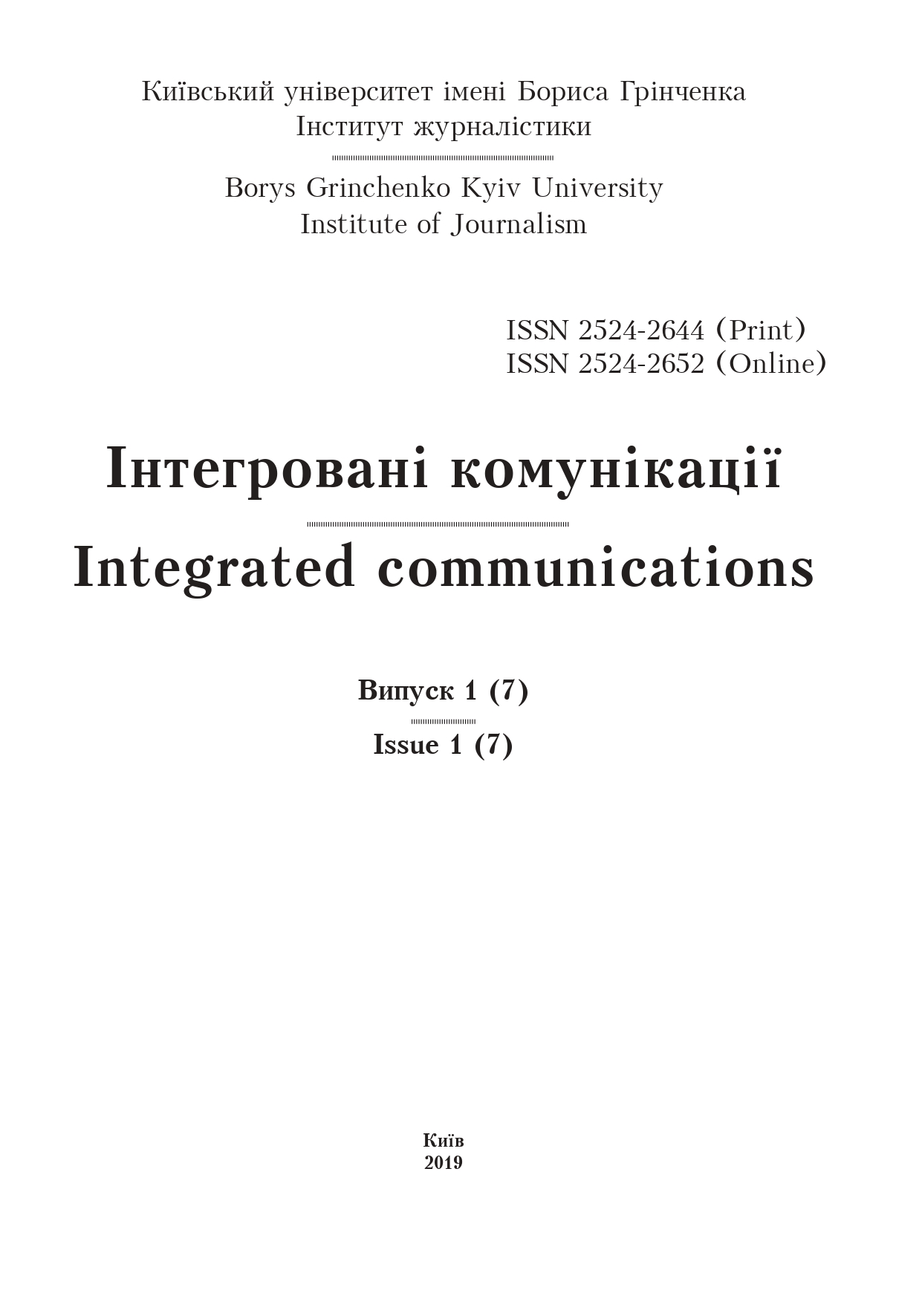The screen performance as an instrument of propaganda (on the example of Ivan Kavaleridze’s film «Koliivshchyna», 1933)
Abstract
The myth-making processes in the communicative space are the «cornerstone» of ideology at all times of mankind’s existence. One of the tools of the effective impact of propaganda is trust in information. Today this come round due to the dissemination of information on personalized video content in social networks, including through converged media. New myths and social settings are creating, fate of the countries is being solved, public opinion is being formed. It became possible to create artificially a model of social installation using the myths (the smallest indivisible element of the myth) based on real facts, but with the addition of «necessary» information. In the 20–30 years of the XX century cinematograph became the most powerful screen media. The article deals with the main ideological messages of the Ukrainian Soviet film «Koliivshchyna» (1933). In the period of mass cinematography spread in the Soviet Ukraine, the tape was aimed at a grand mission – creation of a new mythology through the interpretation of the true events and a con on the public, propaganda of the Soviet ideology. This happened in the tragic period of Ukrainian history (1933, the Holodomor) through the extrapolation of historical truth and its embodiment in the most formative form at that time – the form of the screen performance. The Soviet authorities used the powerful influence of the screen image to propagate dreams, illusions, images, stereotypes that had lost any reference to reality. I. Kavaleridze’s film «Koliivshchyna» demonstrates the interpretation of historical events and national ideas, the interpretation of a relatively remote past through the ideology of the «Soviet-era». The movie is created as a part of the political conjuncture of the early 1930s: the struggle against Ukrainian «bourgeois nationalism» and against the «Union of Liberation Ukraine», the repressive policies against the peasants, the close-out of the «back to the roots» policy. The movie, on the one hand, definitely addresses to the Ukrainian ideas, on the other hand it was made at the period of the repressions against the Ukrainian peasantry. In the movie «Koliivshchyna», despite the censorship, I. Kavaleridze manages to create a national inclusive narrative that depicts Ukrainian space as multi-ethnic and diverse, but at the same time nationally colorful.
Downloads
References
Manakova, Y. Yu. (2008), «Man in the post-industrial world», dissertation dissertation abstract for the degree of candidate of philological sciences, Voronezh, 24 р.
Dubas, O. P. Information and communication space: concept, essence, structure, available at: https://cutt.ly/FtOIDuY (accessed: 15 April 2019).
Kostiuk, V. V., Halych, M. A., Stavytska, A. Yu. маніпулятивні методи в змІ, available at: https://cutt.ly/8tOIP2l (accessed: 15 April 2019).
Boltianskyi, H. M. (1925), «Lenin and cinema», Moskva; Lenynhrad, р. 19.
Pocheptsov, Heohrii (2013), Post-journalism in the Modern World, available at: https://cutt.ly/gtOIIhF (accessed: 15 April 2019).
Horiachev, Yu. Y. (1981), «History of the construction of Soviet cinema (1926–1932)», Moskva, 68 р.
Yakovenko, Yakiv (2017), War and nationalism in Soviet cinema (1927–1941), available at: https://cutt.ly/itOITOq.




